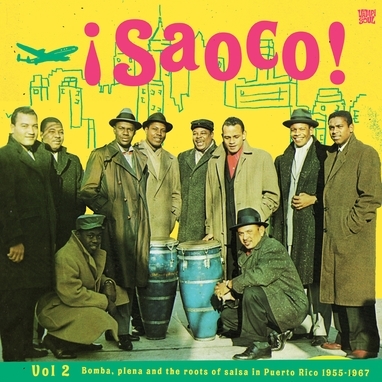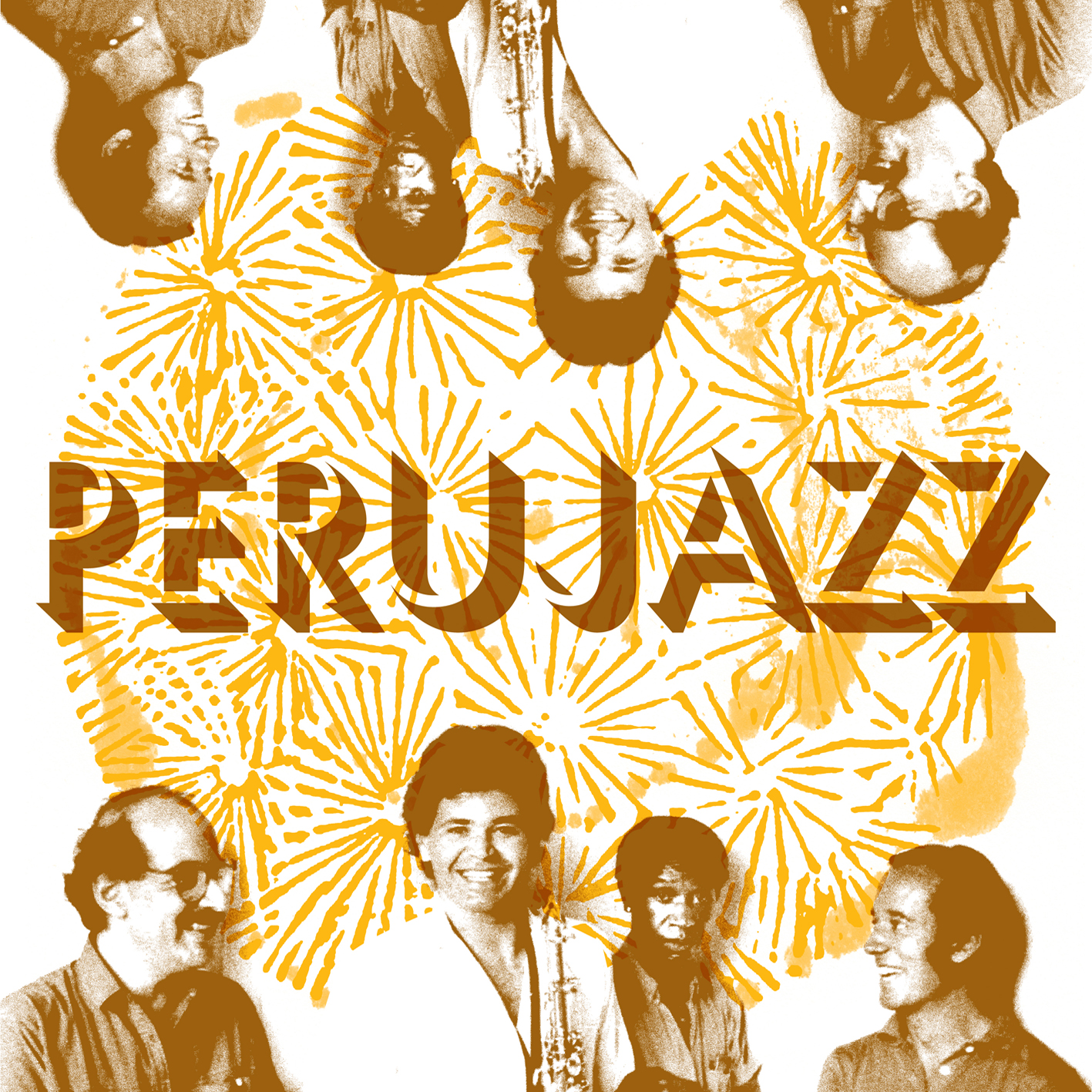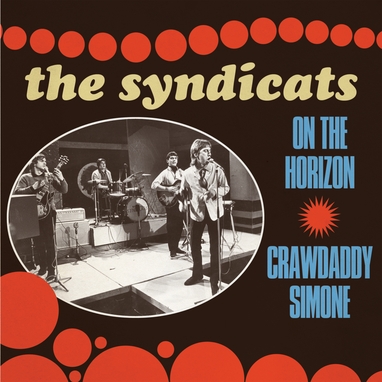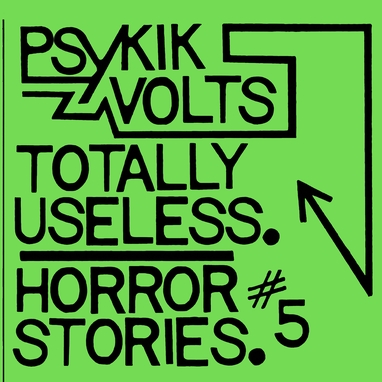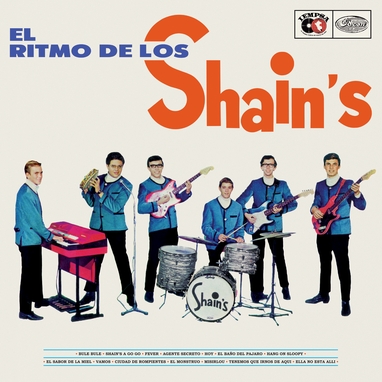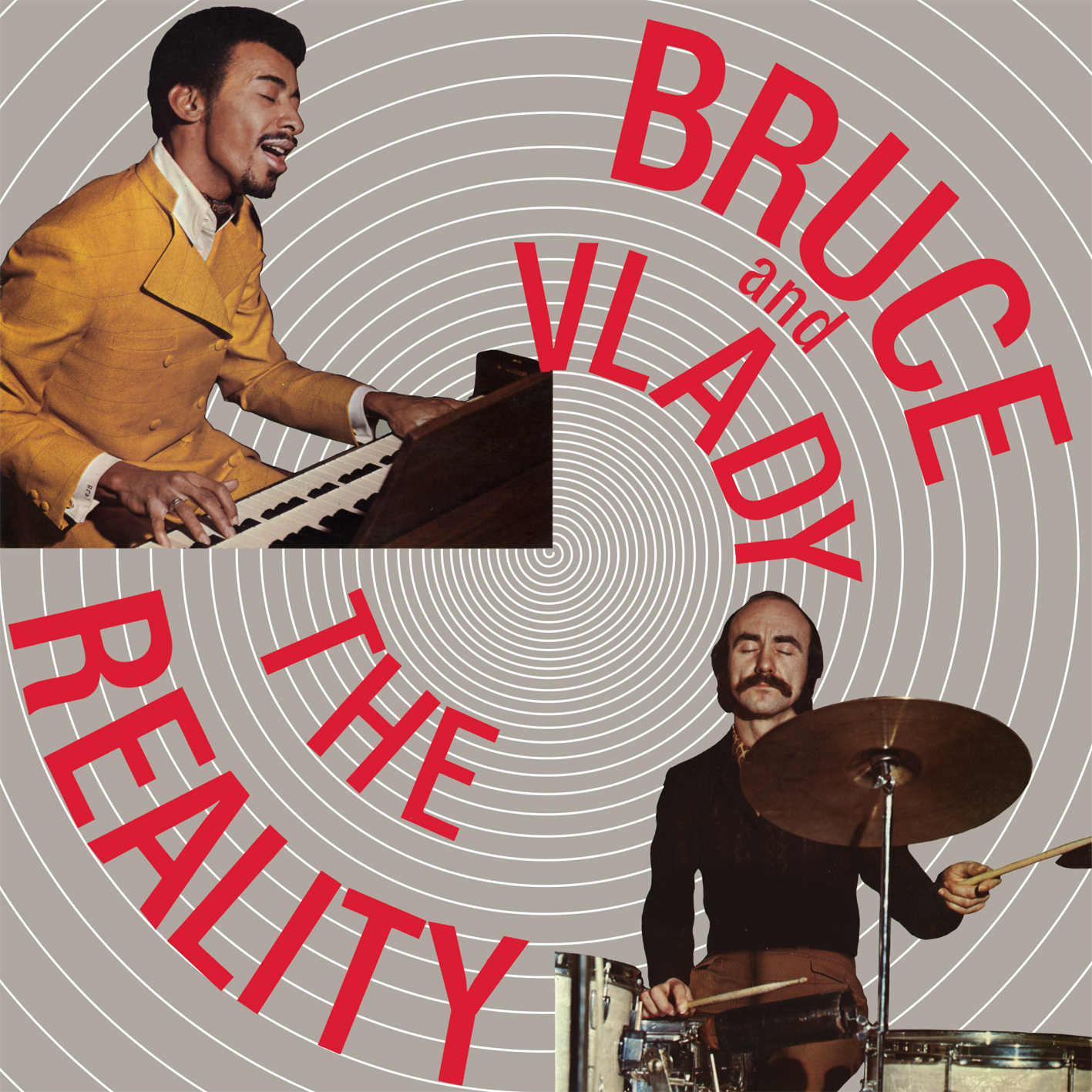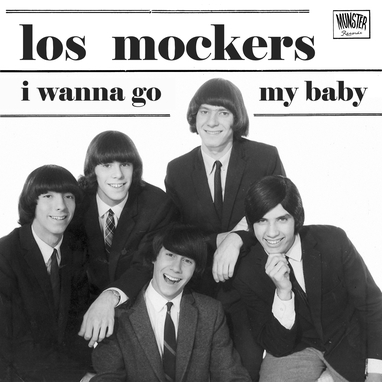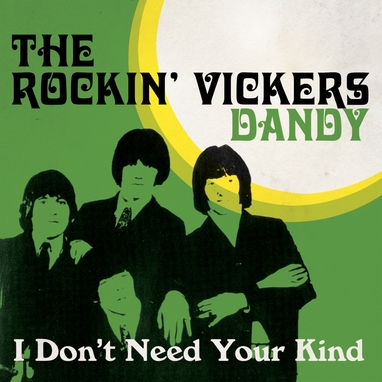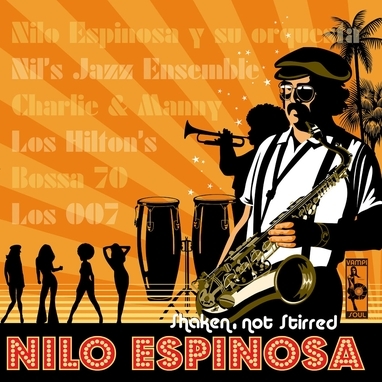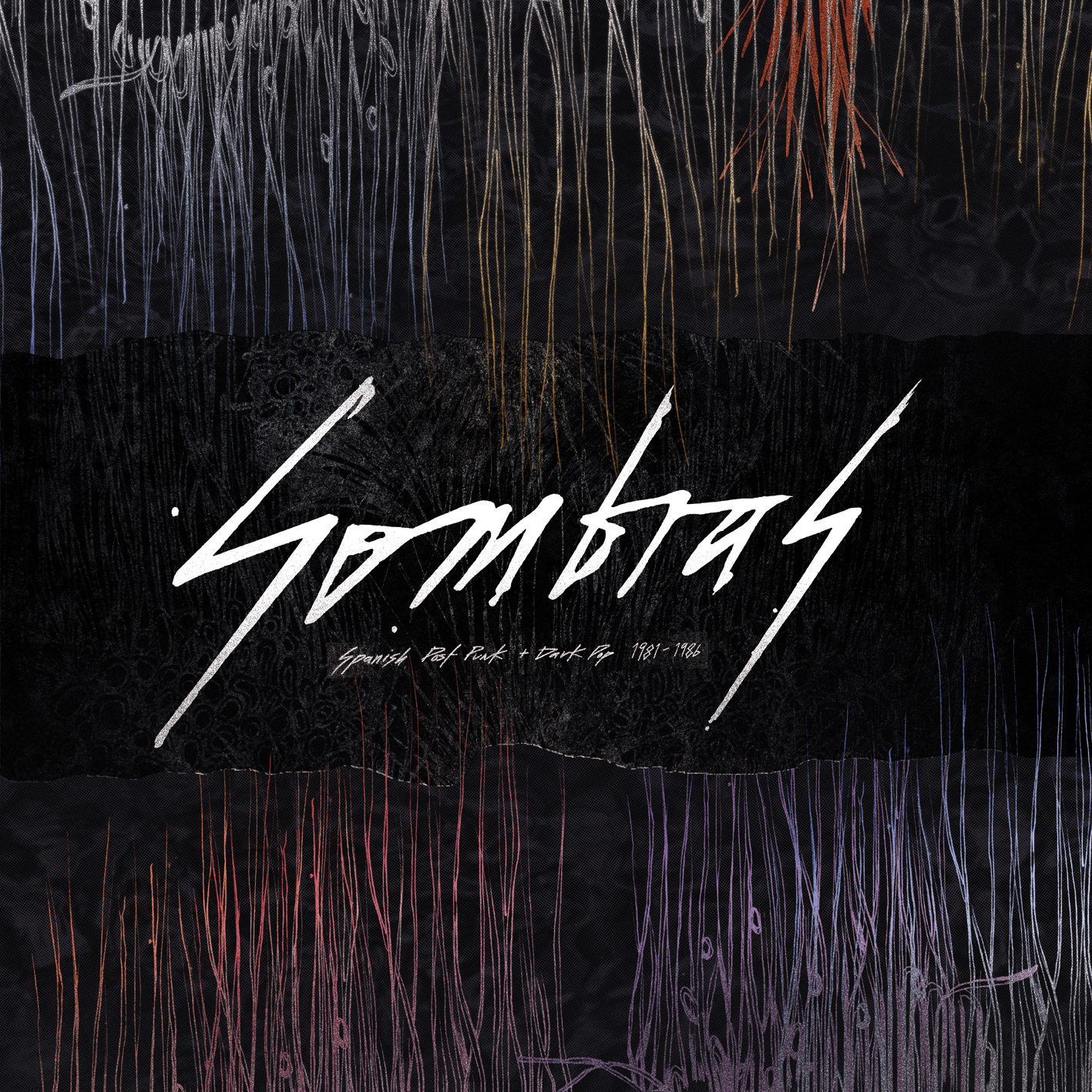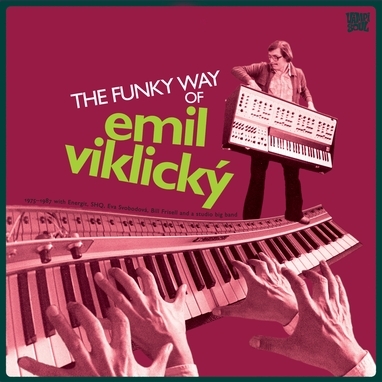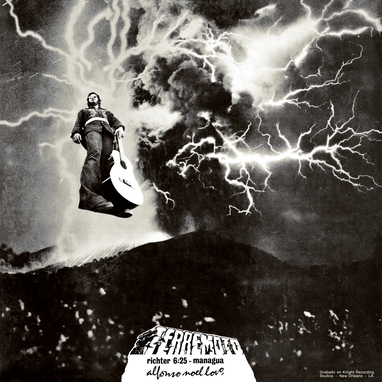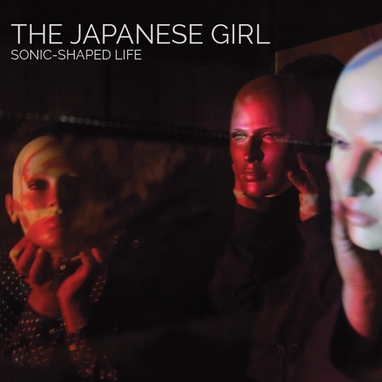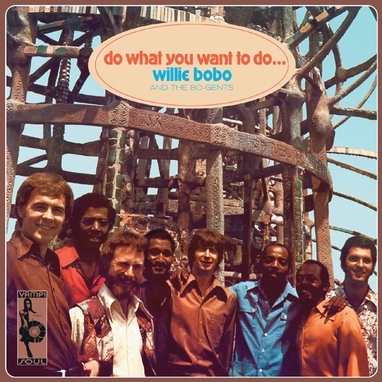VVAA
¡Saoco! Vol 2
Vampisoul
VVAA
¡Saoco! Vol 2
Second volume of our survey of the fascinating music variety of Puerto Rico during the 50s and 60s, which would lead the way to the subsequent salsa scene worldwide. As well as bomba and plena, the main genres featured on volume one, the orchestras here display their masterful craft at playing guaracha, rumba, mambo, merengue and traditional rural music. Extensive liner notes by compiler Yannis Ruel illustrated with original artwork and memorabilia.
¡Saoco! Vol 2. Bomba, plena and the roots of salsa in Puerto Rico 1955-1967 Our first volume of ¡Saoco! included recordings from Cortijo y su Combo, Mon Rivera and some of their other contemporaries exclusively dedicated to the rhythms of plena and bomba. Although these Puerto Rican traditions, in particular the second, later became part of the salsa stew, there’s another reason to consider these artists among the pioneers of the transnational and polymorphic movement known as salsa. The reason is that the repertoire of these groups was never restricted to these Puerto Rican rhythms, nor to any national borders. Maybe the first peculiarity of Puerto Rican music prior to the period that interests us here is that it was recorded predominantly outside of the island, above all in New York, where musicians traveled constantly or just emigrated altogether. Furthermore, since son had emerged from Cuba in 1910, Cuban rhythms had exercised hegemony over tropical music recordings. This was particularly the case in New York and Puerto Rico, which had always been considered Cuba’s little sister. You would have expected orchestras like those of Cortijo or Mon Rivera would alternate a variety of rhythms to please their dance audience whose tastes then favored the sounds of mambo and guaracha. Although both genres are considered Cuban, the presence of guaracha is so old in Puerto Rico – arriving with tours of Cuban comic theatre troupes in the Caribbean basin in the 19th Century – that we can legitimately consider that it acquired its modern form through an exchange between its Cuban source and its different expressions in the West Indies, including the Puerto Rican variety. In addition to these rhythms that formed the backbone of salsa, it was also common that these orchestras would play a merengue, a calypso, and even, although far more rarely, a Brazilian samba, a Colombian cumbia or porro, a Venezuelan joropo, or a Panamanian murga. It’s difficult to know to what extent this diversity corresponded to commercial motives. These styles were possibly imposed by the record labels in their quest to promote a regional Latino market. However, it seems that the groups mentioned didn’t wait until they gained their first hits to develop versatile repertoires. The same professionalization of orchestra music in Puerto Rico already required a command of different genres beginning with jazz and Cuban music. Furthermore, if Cuban rhythms exercised their hegemony upon tropical music from the beginnings of the 20th Century, their domination only became more pronounced after the Castro revolution. As a consequence of the blockade, groups from New York and Puerto Rico occupied this space and took up the repertoire of the Havana orchestras. Already by the mid-1960s, plena was out of style and they were only dancing rumba, guaracha, descarga, charanga, pachanga… and rock’n’roll, just as much on the island as in New York. The selection of this second ¡Saoco! expands its repertoire to emphasize the variety of rhythms and styles that characterized many of the groups included in the first volume. It reveals a Puerto Rican production influenced by the sounds of Cuba and New York, but which also preserved its own character and in which the island genres of bomba, plena, and música campesina enjoyed their golden age.
Productos relacionados
Second volume of our survey of the fascinating music variety of Puerto Rico during the 50s and 60s, which would lead the way to the subsequent salsa scene worldwide. As well as bomba and plena, the main genres featured on volume one, the orchestras here display their masterful craft at playing guaracha, rumba, mambo, merengue and traditional rural music. Extensive liner notes by compiler Yannis Ruel illustrated with original artwork and memorabilia.
¡Saoco! Vol 2. Bomba, plena and the roots of salsa in Puerto Rico 1955-1967 Our first volume of ¡Saoco! included recordings from Cortijo y su Combo, Mon Rivera and some of their other contemporaries exclusively dedicated to the rhythms of plena and bomba. Although these Puerto Rican traditions, in particular the second, later became part of the salsa stew, there’s another reason to consider these artists among the pioneers of the transnational and polymorphic movement known as salsa. The reason is that the repertoire of these groups was never restricted to these Puerto Rican rhythms, nor to any national borders. Maybe the first peculiarity of Puerto Rican music prior to the period that interests us here is that it was recorded predominantly outside of the island, above all in New York, where musicians traveled constantly or just emigrated altogether. Furthermore, since son had emerged from Cuba in 1910, Cuban rhythms had exercised hegemony over tropical music recordings. This was particularly the case in New York and Puerto Rico, which had always been considered Cuba’s little sister. You would have expected orchestras like those of Cortijo or Mon Rivera would alternate a variety of rhythms to please their dance audience whose tastes then favored the sounds of mambo and guaracha. Although both genres are considered Cuban, the presence of guaracha is so old in Puerto Rico – arriving with tours of Cuban comic theatre troupes in the Caribbean basin in the 19th Century – that we can legitimately consider that it acquired its modern form through an exchange between its Cuban source and its different expressions in the West Indies, including the Puerto Rican variety. In addition to these rhythms that formed the backbone of salsa, it was also common that these orchestras would play a merengue, a calypso, and even, although far more rarely, a Brazilian samba, a Colombian cumbia or porro, a Venezuelan joropo, or a Panamanian murga. It’s difficult to know to what extent this diversity corresponded to commercial motives. These styles were possibly imposed by the record labels in their quest to promote a regional Latino market. However, it seems that the groups mentioned didn’t wait until they gained their first hits to develop versatile repertoires. The same professionalization of orchestra music in Puerto Rico already required a command of different genres beginning with jazz and Cuban music. Furthermore, if Cuban rhythms exercised their hegemony upon tropical music from the beginnings of the 20th Century, their domination only became more pronounced after the Castro revolution. As a consequence of the blockade, groups from New York and Puerto Rico occupied this space and took up the repertoire of the Havana orchestras. Already by the mid-1960s, plena was out of style and they were only dancing rumba, guaracha, descarga, charanga, pachanga… and rock’n’roll, just as much on the island as in New York. The selection of this second ¡Saoco! expands its repertoire to emphasize the variety of rhythms and styles that characterized many of the groups included in the first volume. It reveals a Puerto Rican production influenced by the sounds of Cuba and New York, but which also preserved its own character and in which the island genres of bomba, plena, and música campesina enjoyed their golden age.
Productos relacionados
¡Saoco! Vol 2
Second volume of our survey of the fascinating music variety of Puerto Rico during the 50s and 60s, which would lead the way to the subsequent salsa scene worldwide. As well as bomba and plena, the main genres featured on volume one, the orchestras here display their masterful craft at playing guaracha, rumba, mambo, merengue and traditional rural music. Extensive liner notes by compiler Yannis Ruel illustrated with original artwork and memorabilia.
¡Saoco! Vol 2. Bomba, plena and the roots of salsa in Puerto Rico 1955-1967 Our first volume of ¡Saoco! included recordings from Cortijo y su Combo, Mon Rivera and some of their other contemporaries exclusively dedicated to the rhythms of plena and bomba. Although these Puerto Rican traditions, in particular the second, later became part of the salsa stew, there’s another reason to consider these artists among the pioneers of the transnational and polymorphic movement known as salsa. The reason is that the repertoire of these groups was never restricted to these Puerto Rican rhythms, nor to any national borders. Maybe the first peculiarity of Puerto Rican music prior to the period that interests us here is that it was recorded predominantly outside of the island, above all in New York, where musicians traveled constantly or just emigrated altogether. Furthermore, since son had emerged from Cuba in 1910, Cuban rhythms had exercised hegemony over tropical music recordings. This was particularly the case in New York and Puerto Rico, which had always been considered Cuba’s little sister. You would have expected orchestras like those of Cortijo or Mon Rivera would alternate a variety of rhythms to please their dance audience whose tastes then favored the sounds of mambo and guaracha. Although both genres are considered Cuban, the presence of guaracha is so old in Puerto Rico – arriving with tours of Cuban comic theatre troupes in the Caribbean basin in the 19th Century – that we can legitimately consider that it acquired its modern form through an exchange between its Cuban source and its different expressions in the West Indies, including the Puerto Rican variety. In addition to these rhythms that formed the backbone of salsa, it was also common that these orchestras would play a merengue, a calypso, and even, although far more rarely, a Brazilian samba, a Colombian cumbia or porro, a Venezuelan joropo, or a Panamanian murga. It’s difficult to know to what extent this diversity corresponded to commercial motives. These styles were possibly imposed by the record labels in their quest to promote a regional Latino market. However, it seems that the groups mentioned didn’t wait until they gained their first hits to develop versatile repertoires. The same professionalization of orchestra music in Puerto Rico already required a command of different genres beginning with jazz and Cuban music. Furthermore, if Cuban rhythms exercised their hegemony upon tropical music from the beginnings of the 20th Century, their domination only became more pronounced after the Castro revolution. As a consequence of the blockade, groups from New York and Puerto Rico occupied this space and took up the repertoire of the Havana orchestras. Already by the mid-1960s, plena was out of style and they were only dancing rumba, guaracha, descarga, charanga, pachanga… and rock’n’roll, just as much on the island as in New York. The selection of this second ¡Saoco! expands its repertoire to emphasize the variety of rhythms and styles that characterized many of the groups included in the first volume. It reveals a Puerto Rican production influenced by the sounds of Cuba and New York, but which also preserved its own character and in which the island genres of bomba, plena, and música campesina enjoyed their golden age.
Second volume of our survey of the fascinating music variety of Puerto Rico during the 50s and 60s, which would lead the way to the subsequent salsa scene worldwide. As well as bomba and plena, the main genres featured on volume one, the orchestras here display their masterful craft at playing guaracha, rumba, mambo, merengue and traditional rural music. Extensive liner notes by compiler Yannis Ruel illustrated with original artwork and memorabilia.
¡Saoco! Vol 2. Bomba, plena and the roots of salsa in Puerto Rico 1955-1967 Our first volume of ¡Saoco! included recordings from Cortijo y su Combo, Mon Rivera and some of their other contemporaries exclusively dedicated to the rhythms of plena and bomba. Although these Puerto Rican traditions, in particular the second, later became part of the salsa stew, there’s another reason to consider these artists among the pioneers of the transnational and polymorphic movement known as salsa. The reason is that the repertoire of these groups was never restricted to these Puerto Rican rhythms, nor to any national borders. Maybe the first peculiarity of Puerto Rican music prior to the period that interests us here is that it was recorded predominantly outside of the island, above all in New York, where musicians traveled constantly or just emigrated altogether. Furthermore, since son had emerged from Cuba in 1910, Cuban rhythms had exercised hegemony over tropical music recordings. This was particularly the case in New York and Puerto Rico, which had always been considered Cuba’s little sister. You would have expected orchestras like those of Cortijo or Mon Rivera would alternate a variety of rhythms to please their dance audience whose tastes then favored the sounds of mambo and guaracha. Although both genres are considered Cuban, the presence of guaracha is so old in Puerto Rico – arriving with tours of Cuban comic theatre troupes in the Caribbean basin in the 19th Century – that we can legitimately consider that it acquired its modern form through an exchange between its Cuban source and its different expressions in the West Indies, including the Puerto Rican variety. In addition to these rhythms that formed the backbone of salsa, it was also common that these orchestras would play a merengue, a calypso, and even, although far more rarely, a Brazilian samba, a Colombian cumbia or porro, a Venezuelan joropo, or a Panamanian murga. It’s difficult to know to what extent this diversity corresponded to commercial motives. These styles were possibly imposed by the record labels in their quest to promote a regional Latino market. However, it seems that the groups mentioned didn’t wait until they gained their first hits to develop versatile repertoires. The same professionalization of orchestra music in Puerto Rico already required a command of different genres beginning with jazz and Cuban music. Furthermore, if Cuban rhythms exercised their hegemony upon tropical music from the beginnings of the 20th Century, their domination only became more pronounced after the Castro revolution. As a consequence of the blockade, groups from New York and Puerto Rico occupied this space and took up the repertoire of the Havana orchestras. Already by the mid-1960s, plena was out of style and they were only dancing rumba, guaracha, descarga, charanga, pachanga… and rock’n’roll, just as much on the island as in New York. The selection of this second ¡Saoco! expands its repertoire to emphasize the variety of rhythms and styles that characterized many of the groups included in the first volume. It reveals a Puerto Rican production influenced by the sounds of Cuba and New York, but which also preserved its own character and in which the island genres of bomba, plena, and música campesina enjoyed their golden age.

